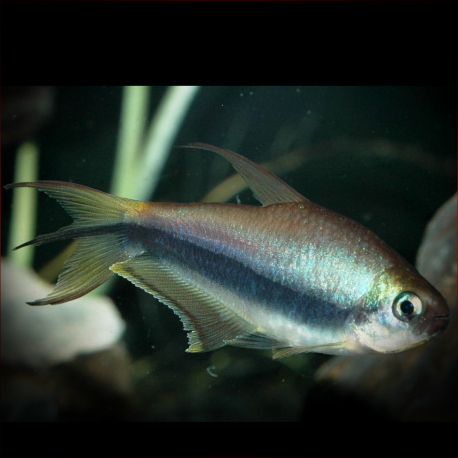More info
Datasheet
| Minimum Tank Size | 70 litres / 18.49 US gallons |
| Maximum Size | 8.0cm / 3.15inches |
| Temperature | 22°C / 71.60°F - 25°C / 77.00°F |
| Hardness | 0-20ºdH |
| pH | 6.3-7.0 |
General Description
There are currently five described species of Nemadoras, with Nemadoras leporhinus being the most commonly seen in the hobby. It can be distinguished from similar species by its clear dorsal fin with a dark base and a rounded snout. The Mouse Catfish, as it is commonly known, reaches a maximum size of 8.0cm and requires a minimum tank size of 70 litres. Information on sexual dimorphism and reproduction in captivity is currently unknown.
Aquarium Setup
The Mouse Catfish is a shy, nocturnal species that thrives in a dimly lit tank with ample hiding spots such as clay flowerpots, plastic piping, and driftwood. While plants are not essential, they can provide additional cover and reduce the amount of light reaching the tank bottom. Maintaining a degree of water flow in the tank is appreciated by this species. For observation purposes, installing a red light above the tank can allow viewing as the species is not sensitive to red lightwaves.
Behaviour
Despite being peaceful, the Mouse Catfish is not suited for communities with more active or territorial bottom dwellers. It is best kept with placid species that inhabit other areas of the tank, such as characins, cyprinids, anabantoids, and dwarf cichlids. In nature, this species occurs in schools and fares better in the company of its own kind, often sharing the same refuge during the day. Though minor positioning disputes may occur, physical harm is rare.
Feeding and Diet
The Mouse Catfish typically accepts sinking catfish pellets, algae wafers, and dried foods but should also be offered live and frozen options regularly. Bloodworms are particularly favored, and feeding just before lights out ensures this primarily nocturnal species receives ample nutrition.
Reproduction & Dimorphism
Reproductive behaviors and sexual dimorphism of the Mouse Catfish have not been observed in captive settings, making them subjects of interest for future studies on breeding and gender distinctions.
Habitat and Distribution
In the wild, Nemadoras leporhinus has been recorded in river systems of Venezuela, Guyana, and Brazil, including the Rio Branco, Rio Orinoco, and Rio Essequibo. While precise habitat data is lacking, similar species like the Hassar are commonly found in slow-moving tributaries and streams.

